We are often asked by new and existing customers what tolerances can you hold when you produce an aluminum extrusion? The short answer is, it depends. The factors we consider when factoring the tolerances are:
- the overall size of the design
- the design feature in question
- the wall thickness
- the alloy & temper desired
To more accurately answer the tolerance question let’s narrow things down a little bit. The following round tubes of varying sizes are shown below with a comparison of the differences between tolerances Profile Precision Extrusions can produce, and the industry-standard tolerance.
Round Tube Tolerances
| 3/4” OD Tube | 1 ½” OD Tube | 2 ¼” OD Tube |
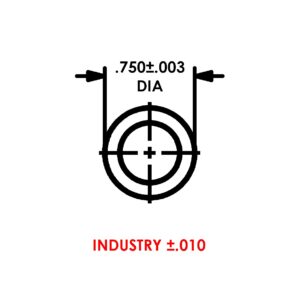 |
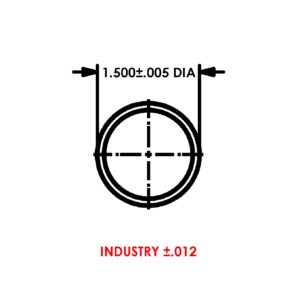 |
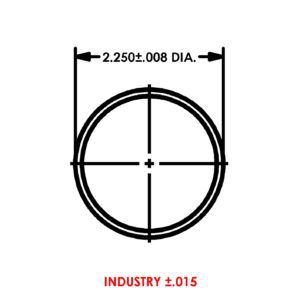 |
The advantages of more a precise tolerance is:
- Higher precision when machining holes, slots, or grooves
- More stability when telescoping tubes are fully extended
- Reduced vibration in a high rpm applications
- Easier assembly with other components
There are many hollow aluminum designs and solid aluminum shapes that can be produced with better-than-industry tolerances. For example, extruded aluminum is a popular choice for road bike wheels. The example below shows a road bike rim design with .032” wall thickness. The thin wall and tight tolerance ensure the bike wheels are very lightweight and as strong as possible.
Special Shapes
| Bike Rim – 2949 |
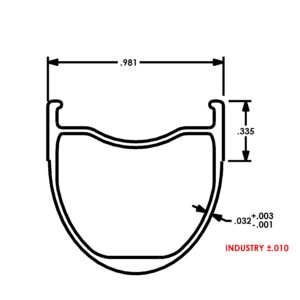 |
Another popular aluminum extrusion design is handguard designs for the firearms industry. A handguard fits over the barrel to protect the user from the heat of the barrel. Handguards are also designed with picatinny rails which act as mounting points for accessories such as tactical lights and telescopic sights. Below is an example of a handguard / picatinny rail combination. Typically the picatinny rail is extruded oversize and then machined to the final dimensions. It is possible to extrude the picatinny rail to its exact size saving time and money by eliminating the post extrusion machining steps.
| Handguard/Picatinny Rail – 2908 |
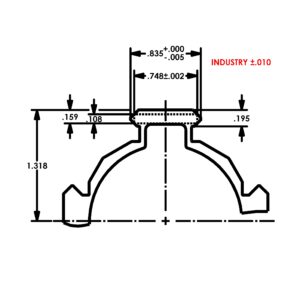 |
Another frequently asked question is how thin a wall can you extrude? The answer, no surprise, is again “it depends.” The overall size of the design and alloy/temper requirement are the two main determining factors. Profile Precision Extrusions’ minimum wall thickness rule of thumb is summarized in the table below:
| Alloy | Minimum Wall Thickness |
| 3003 | .020″ |
| 6063 | .025″ |
| 6061 | .030″ |
Call us today and find out how we can help you lower your overall costs, increase quality, and save time by allowing us to manage the value chain for you. Profile Precision Extrusions would love to help with your unique challenge!


